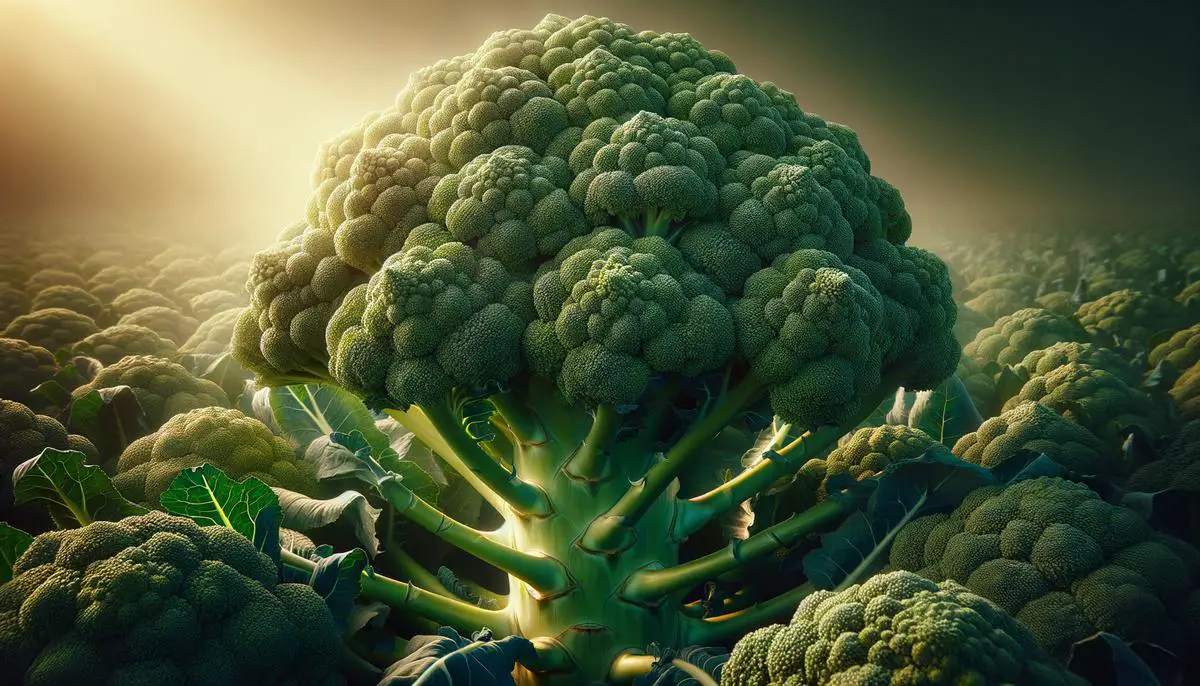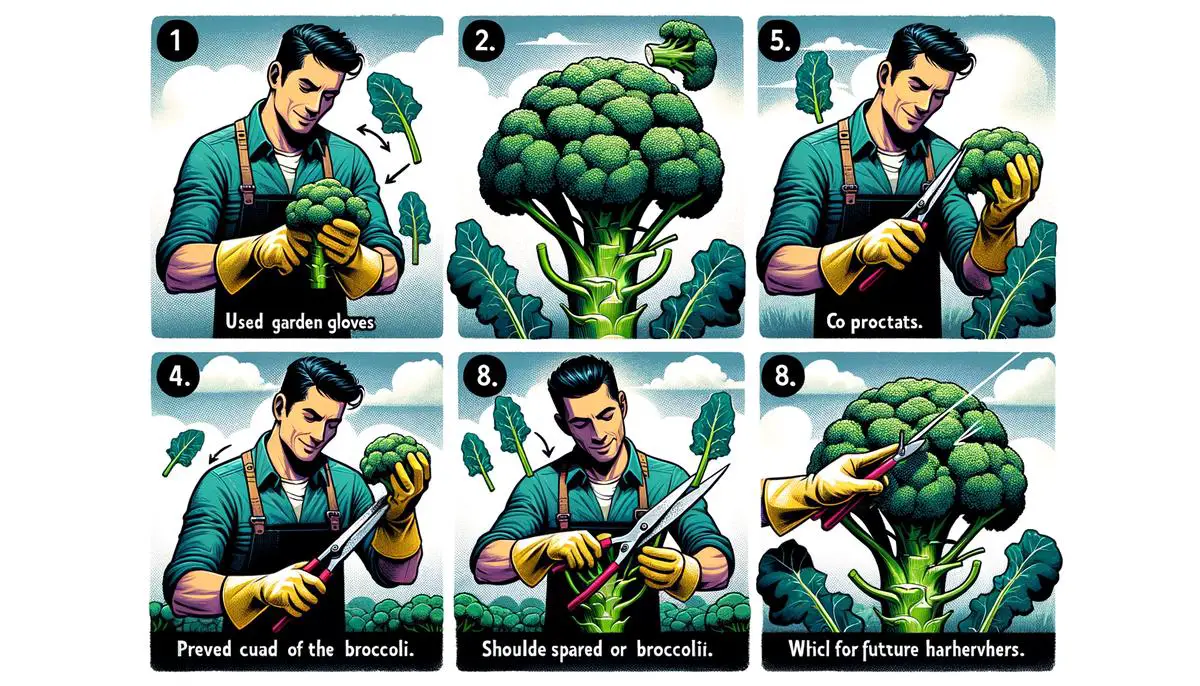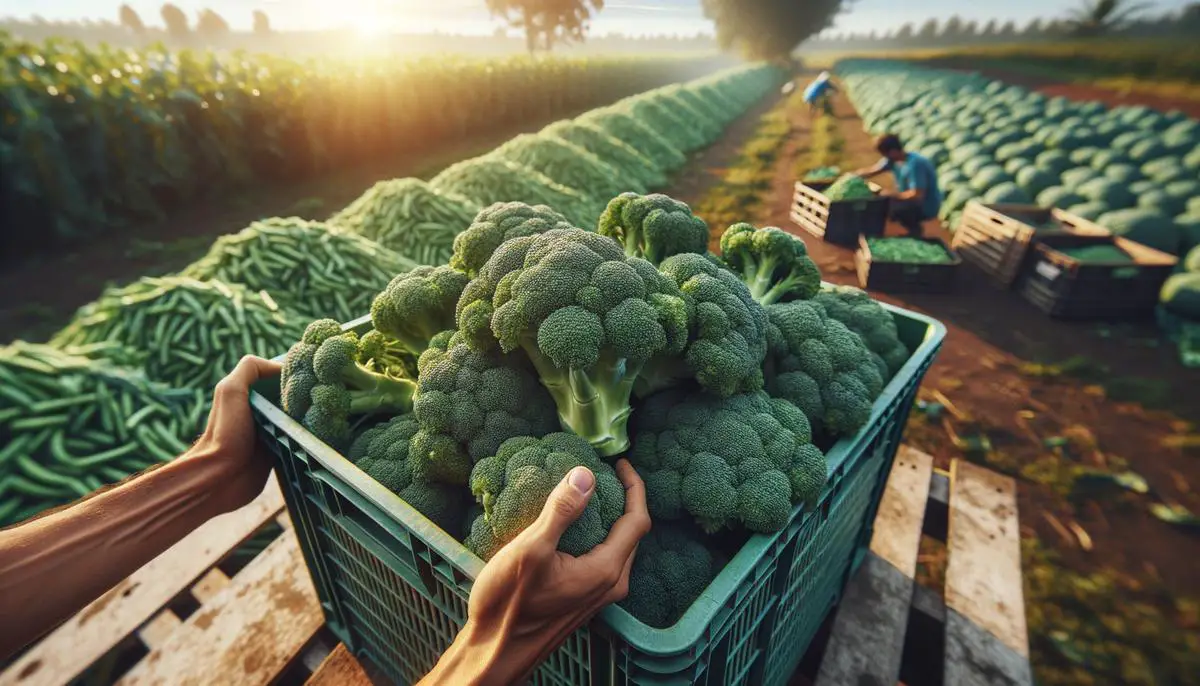Growing broccoli in your own garden is an adventure filled with anticipation and excitement. Knowing when and how to harvest this vegetable ensures that you get to enjoy its flavorful crunch right from your backyard. This article guides you through each step of harvesting broccoli, from spotting the perfect ripeness to the proper way to cut, and even how to store your green bounty. With the right knowledge, harvesting broccoli becomes a simple and rewarding process.
Identifying Broccoli Harvest Time
Harvesting Broccoli: The Right Time
Reader Poll: What online courses would interest you?
As gardeners, navigating the precise moment to harvest broccoli can seem like a balancing act. Yet, understanding a few clear indicators turns this task from a guesswork game into a straightforward process. Doing it right ensures you enjoy the crispest, most flavorful broccoli straight from your garden. Here’s how to recognize when your broccoli crowns are ripe for the picking.
Firstly, size matters. Ideal broccoli heads should span 4 to 7 inches across. This range marks maturity, ensuring the heads are neither too young nor overly mature. But size isn’t the only clue; color and texture play pivotal parts too. Look for tightly packed, dark green florets. These characteristics signal that the broccoli is at its peak, promising the best taste and nutritional value.
Timing plays a crucial role as well. From planting, most broccoli varieties take between 55 to 85 days to reach harvest-ready maturity. Keeping a gardening diary or calendar helps track this progression and anticipate the harvest window. However, nature’s clock is more accurate than any written record. When the heads look lush and feel firm, it’s time.
Subscribe to our newsletter!
The condition of the florets is the clearest indicator. If you notice the florets starting to spread out or show hints of yellow, it’s a sign that they’re crossing from prime into past due. This phase signals an imminent blossom, which, while beautiful, marks a decline in taste and texture for your broccoli. Harvesting just before this stage ensures the best culinary experience.
Lastly, the weather can hint at the optimal harvesting time. Broccoli thrives and tastes best when matured in cooler temperatures. If a sudden warm spell is approaching, consider harvesting your broccoli slightly early to avoid it becoming bitter.
To recap, the ideal broccoli for your table or storage is one with a generous, densely packed head, showing off a rich green hue without any signs of yellowing or loosening florets. When these elements align, coupled with a keen sense of timing and an eye on the weather, you’re set to harvest. Then, it’s just a matter of enjoying the fruits of your labor, knowing you’ve picked your broccoli at the perfect moment.

Correct Cutting Technique
Harvesting broccoli isn’t as straightforward as picking an apple from a tree, but it’s equally satisfying. To ensure you encourage future growth, allowing you to enjoy multiple harvests from a single plant, follow these steps:
- Start by identifying your main broccoli head. This is typically central and the largest. Do not wait for it to reach its maximum potential size as seen in grocery stores; homegrown varieties often thrive with earlier picking.
- Equip yourself with a sharp knife or a pair of gardening shears. Clean cuts are essential in preventing any unnecessary damage to the plant, which could hinder future growth.
- Locate the stem of the main broccoli head. You’ll want to make your cut 5 to 6 inches below the head. Aim for a diagonal cut; this helps in preventing water from accumulating on top of the cut surface, which could lead to rot and disease.
- Once the main head is harvested, don’t call it quits. Your broccoli plant will respond by producing additional, though smaller, offshoots from the sides of the stem where you made your cut. These can be harvested similarly once they’re of a decent size and the florets are tightly closed.
- Remember, the goal isn’t just to harvest the broccoli but to maintain the health of the plant for continued production. Watering plays a crucial role post-harvest. Keep the soil moist but not saturated to support the growth of new heads.
- Regularly check your plant for these offshoots. The more frequently you harvest, the more your plant will produce. It’s a cycle that rewards the diligent gardener with a prolonged harvest season.
- Finally, a bit about maintenance – keep an eye out for yellowing leaves and remove them promptly. Not only does this tidy up your plant, but it also redirects energy into producing new heads rather than sustaining dying foliage.
By following these steps, you ensure a bountiful and extended harvest from your broccoli plants. Remember, patience and care are your best tools in the garden, yielding not just vegetables but satisfaction from your green-thumbed endeavors.

Post-Harvest Storage
Storing harvested broccoli to ensure its freshness is a straightforward task, yet many nuances play pivotal roles in prolonging its life span and preserving its quality. After the careful, sweat-inducing process of cultivation and harvesting, the following steps guide you through the optimal storage methods.
Immediate Post-Harvest Care
Cooling Down: Just like cooling your heels after a hectic day, broccoli needs a chill period immediately after harvest. Submerge your freshly harvested broccoli heads in cold water for a few minutes. This not only removes field heat but also washes away any hidden pests or dirt. Think of it as a spa treatment for your veggies.
Drying: Post-cooling, gently shake off any excess water and let the broccoli air dry. Patience is key here; ensure the heads are thoroughly dry to prevent any mold from being a party crasher in your storage plans.
Storage Preparations
Trimming: If the stems seem excessively long, trim them down a bit, leaving about an inch from the head. This doesn’t mean going Edward Scissorhands on them; just a polite haircut will do.
Prepping for the Fridge: Grab a clean, perforated plastic bag. No bag with holes? No worries. A regular plastic bag with a few holes punched in it with a sharp object works just fine. Why the holes? They allow the broccoli to breathe, preventing moisture buildup.
Fridge Time
Location, Location, Location: Place the prepped and bagged broccoli in the crisper drawer of your refrigerator. The crisper offers a slightly different microclimate which is perfect for greens, making it Broccoli’s personal VIP lounge.
Humidity Matters: Adjust the crisper’s humidity settings to high. Broccoli loves moisture, but only in the air around it. This is like setting the right mood for a fine dining experience but for veggies.
Life Span Considerations
Shelf Life: Properly stored, broccoli can stay fresh for up to 5 days. It’s a bit of a diva in that regard, not liking to overstay its welcome.
Check-ups: Peek in on your green guest every now and then. If you notice any limp or yellowing florets, it’s a sign they’re starting to feel their age. They’re still edible but think of using them sooner rather than later.
For the Long Haul: Freezing
Freezing is an option if you’re looking to extend broccoli’s shelf life even further. Blanch the heads first (boil for a few minutes, then plunge into ice water), dry them thoroughly, and store in airtight containers or freezer bags. Label and date the bags; frozen broccoli can be a trusty ingredient for up to a year.
Following these steps will ensure that every broccoli harvested from your garden retains its peak freshness and quality for as long as possible. By treating your veggies with a little TLC post-harvest, you’re ensuring that the fruits of your labor are enjoyed to their fullest, be they in a salad, stir-fry, or as a healthy snack. Your efforts in the garden culminate in this care, preserving not just the physical vegetable but the freshness and flavors that only home-grown produce can boast.

By adhering to the advice laid out in this guide, you’ll find yourself well-equipped to manage your broccoli plants from the garden to the table with ease. Each step, from identifying the prime time for harvest to ensuring your broccoli remains fresh in storage, plays a crucial role in the process. Your dedication to these methods promises a delightful outcome, with each broccoli head picked at its peak and stored perfectly, ready to enhance your meals with its freshness and flavor. Let the satisfaction of harvesting your broccoli serve as a testament to the joys of gardening.

